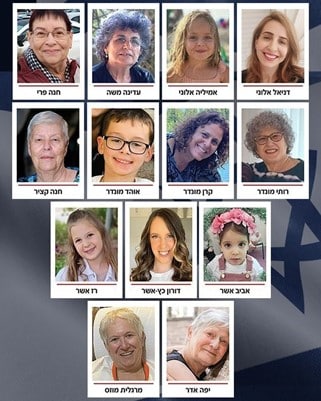
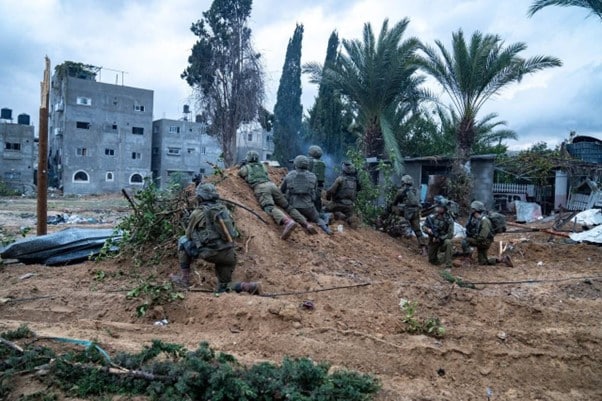
General background
The war started on October 7th after the surprise attack of the “Nuchba,” the special forces unit of the terror organization Hamas, which governs the Gaza Strip. Hamas terrorists invaded Israeli towns and army bases adjacent to Gaza and killed over 1200 innocent civilians and 375 members of the security forces who were on site and engaging with the terrorists.
Around 249 Israelis and foreign nationals were kidnapped by Hamas, other Palestinian terror organizations, and Gaza civilians who joined the rampage on October 7 and are being held in Gaza. These include babies, children, women, and the elderly, as well as IDF soldiers.
The attack is known as the October 7 Massacre, and according to estimates, there were at least 3,000 terrorists who invaded from Gaza into Israel, including Hamas, the Islamic Jihad, and other like-minded Gazan civilians.
The rampage included spine-chilling cases of cold-blooded murder, rape, torture, looting, maiming, and injuring of thousands of people. The terrorists burned houses with their residents inside, destroyed vast parts of the border towns, and occupied entire villages and army bases until Israeli forces neutralized them in battle. It took almost 50 hours to clear the entire area from the last remaining terrorists. According to documents found on the terrorists, Hamas’ plan included invading deep into Israeli territory, including Be’er Sheva, Judea and Samaria, and the Tel Aviv area.
As a result, Israel declared war with three main objectives:
- The total elimination of the terror organization Hamas and the collapse of its governmental and military capabilities.
- Bringing back all the hostages kidnapped from their houses and army bases.
- Reshaping the reality in Gaza to make sure there will be no similar terror threat there on Israel after the war.

Hamas, a terrorist group funded and supported by Iran, set a goal to set aflame the entire region and mobilize it to defeat Israel. This includes triggering a chain reaction from Palestinian terrorist organizations in Judea and Samaria, the Iranian militias in Lebanon – mainly Hezbollah, and Iranian proxies in Iraq, Syria Yemen, and the rest of the Middle East.
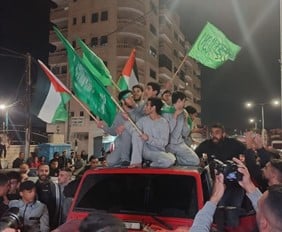

The United States has been leading the international support for Israel, providing an unequivocal green light to Israel to act in self-defense, and warned Iran and Hezbollah from the outset not to take advantage of the situation and instigate attacks against Israel on other fronts. Other countries such as France, the United Kingdom, Germany, Italy, Hungary, as well as Arab countries such as Bahrain and the UAE, strongly condemned the massacre, with Israel seeing a wave of support visits by foreign leaders and resolutions such as the one passed in the European Parliament in support of Israel. That being said, the US administration has also voiced positions that Israel had to balance, such as the demand to reinstate the Palestinian Authority as the sovereign in the Gaza Strip, and reports on expectations to see a cease-fire and criticism on an alleged high number of killed civilians in Gaza.
However, the Iranian regime has been vocal in its support for Hamas and Hezbollah and geared up its aggressive rhetoric against Israel, the United States, and the West, including statements by the Iranian Leader Khamenei and Iranian senior government and military officials. Supported by Iran and most likely on its regime’s orders, on October 8, 2023, a day after the war started, Hezbollah and other Palestinian terrorist organizations opened another front against Israel from Lebanon, with low-intensity warfare that included the launching of hundreds of rockets, anti-tank missiles, and attack drones. Pro-Iranian militias operating from the Syrian-Israeli border also took part in the fighting.
The Iranian militias in Iraq commenced a series of attacks on the US bases in Iraq and Syria, rejecting the US presence there and demanding the evacuation of all American forces.
The Houthis, Iran’s militia in Yemen, a relatively distant theater, entered the war by declaring their resistance against Israel and firing 51 attack drones, cruise missiles, and ground-to-ground missiles. Almost all of them were intercepted by Israeli air defense systems, USS Carney – a US Navy destroyer deployed in the Red Sea, and in one case by Saudi air defense systems.
Gaza Strip
Israeli forces continued to operate intensively in the Gaza Strip, conducting raids and arresting suspected terrorists.
The first pause
A temporary four-day pause, or cease-fire agreement was reached and started on November 24 between Hamas and Israel. It called for the release of 50 Israeli civilians, children, and women who were kidnapped from their homes on October 7 in exchange for the release of 150 Palestinian prisoners convicted of terror-related activities and a substantial humanitarian aid package to be provided, including a convoy of approximately 200 trucks full of aid per day entering the Gaza Strip.
After four days, as of November 27, Hamas continued to hold 168 live hostages, and another five hostages whom Hamas reported had died in captivity. Israel agreed with Hamas on an additional two days of pause in fighting in exchange for the release of another 20 Israeli hostages.
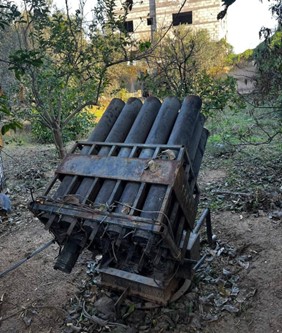
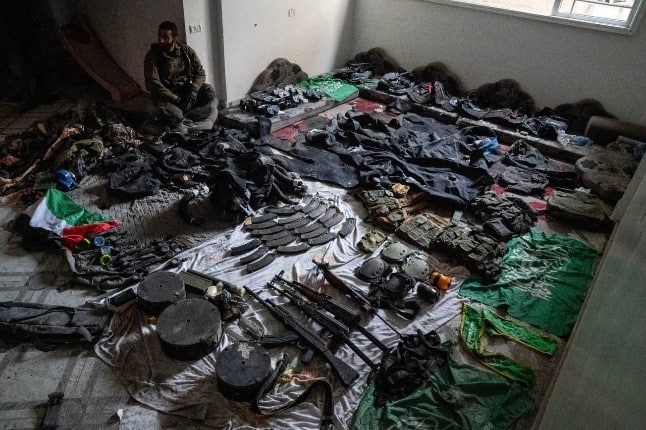
Before the pause
In the days leading up to the temporary cease-fire agreement, the IDF maneuvered in the Gaza Strip and achieved its operational goals before pausing for a few days. Among other targets, the IDF exposed terrorist infrastructure in Hamas’ stronghold, the Al Shifa hospital, in an extremely complex and thorough operation, where underground tunnels and evidence of hostage holding were exposed.[1] Palestinian reported IDF activity in the Indonesian hospital as well.
During operational activity in Bet Hanoun, Bet Lahiya, and in Gaza City’s Zeitoun and Jabaliya neighborhoods alongside the city of Han Younes, clear evidence for Hamas’ use of civilian infrastructure were found, including in kindergartens, hospitals, mosques, and in children’s bedrooms in private apartments. Those included rocket manufacturing centers, RPG missiles, multiple ammunitions, weapons, and incitement materials such as Arabic copies of Mein Kampf and anti-Semitic content in school manuals.
In addition, interrogations of dozens of arrested Nukhba terrorists alongside other Hamas members arrested in the Gaza Strip provided invaluable intelligence to troops acting on the ground, as well as proof for Hamas’ use of the civilian population. Reportedly, they provided details on underground tunnel networks and the location of warehouses and facilities used by Hamas, as well as details on the situation of Israelis taken hostage. Videos of interrogated terrorists who recount the use of the Al Shifa hospital by Hamas for military ends were distributed by the IDF and ISA as proof for the international community.
The IDF eliminated five senior Hamas officials during the days right before the temporary cease-fire:
1. Ahmed Ahandor, who served as the commander of Hamas’ northern division of the Gaza Strip
- Iman Tsiam, who served as Hamas’ head of TMS formation for around 15 years
- Parsen Khalifa, head of Hamas’ Tulkarm Committee and a senior member in its Judea and Samaria headquarters
- Vaal Rajab, Hamas’ deputy commander of the northern division of the Gaza Strip, also serves as a divisional operations officer
- Rafat Salman, head of the Hamas’ combat aid system in the northern Gaza Strip
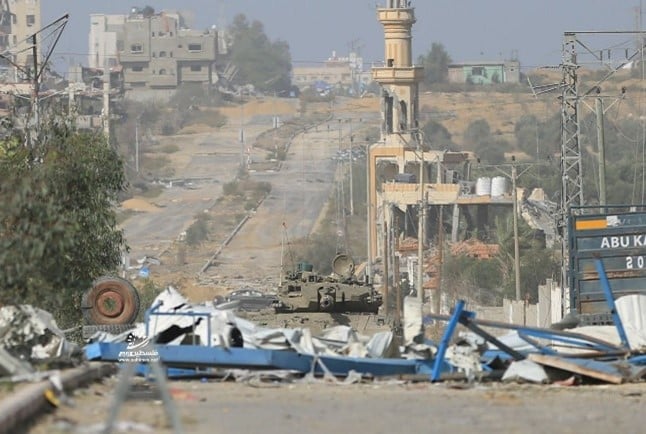
Lebanon
- Hezbollah has stepped up its attacks on Israel, firing over 557 rockets, drones, and anti-tank missiles from Lebanon since October 8, of which 130 attacks were carried out this week
- Israel has retaliated with airstrikes and ground bombing
- Reportedly, Hezbollah counted at least 86 dead operatives, and the other terrorist organizations have 14 dead since the start of the fighting
- For Israel, nine fatalities, Eight soldiers and one civilian so far
- The fighting has raised the risk for a broader multi-front conflict, even a regional conflict
In recent weeks, Hezbollah has escalated the fighting. Since the beginning of the fighting, over 557 attacks against Israel have been carried out from Lebanon. The attacks mainly include firing anti-tank missiles and launching rockets and mortar bombs. The organization also purported to use novel types of armaments never before used against Israel, such as the heavy Burkan rocket that can weigh up to 500kg; there is no independent confirmation for these claims. Hezbollah did intensify its use of attack drones, of which it made limited use in the past. Most attacks are along the border and within the range of a few kilometers from the Blue Line.
During the week, there were about 130 attacks from Lebanon on Israel by rockets, drones, and anti-tank missiles.
- On Wednesday, November 23, 2023, in the morning hours, Hezbollah launched the heaviest barrage of rockets into Israeli territory since the beginning of the war, launching 48 rockets into Israeli territory. However, The IDF spokesperson announced that only 35 crossed into Israeli territory (the rest landed in Lebanese territory). The reason for Hezbollah’s most significant rocket launch since the beginning of the war may be the killing of six members of the Al-Radhwan force, Hezbollah’s elite unit, in an Israeli airstrike carried out the previous day on November 22, while they were in Beit Yahon. Among the dead were the son of Muhammad Raed, the chairman of the Hezbollah faction in the parliament, and Khalil Jawad Shahimi, a senior commander of the Al-Radhwan force.
- On Saturday, an air-to-ground missile was fired toward an IDF plane and intercepted by Israeli forces that also intercepted a suspected drone.
- Hezbollah’s combat information arm published an infographic summarizing the organization’s activities since the beginning of the “Iron Swords War” (between October 8 and November 22, 2023).
According to the infographic, the organization’s operatives carried out 275 attacks against 40 IDF outposts as well as artillery fire at five settlements, in which they claimed that more than 354 people were killed and wounded (referring to soldiers, officers, and civilians).
According to the infographic, Hezbollah’s activities destroyed armored personnel carriers (21), positions (15), cameras (170), radars (47), UAVs (3), communication systems (77), intelligence systems (35), Jamming systems [referring to electronic warfare systems (LA)] (21)
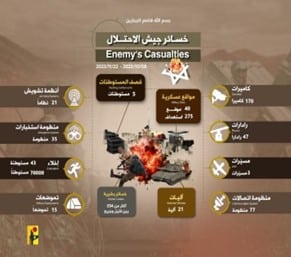

- It was confirmed that on November 22, an attack drone that made its way from Lebanon crossed Jordan, then crashed on a school facility in the southern Israeli city of Eilat. The premises was empty at the time, and there were no casualties. This irregular incident, in which a drone made its way from Lebanon to Israel’s southernmost point and triggered no siren, was investigated by Israeli authorities.
Judea and Samaria
- Hamas has been trying to incite violence in throughout Judea and Samaria, calling for attacks on Israelis, with the understanding that warfare on multiple fronts can deflect Israel’s focus from the fighting in Gaza.
- In total, there were 403 reported Palestinian attacks against Israelis in Judea and Samaria, of which 19 were carried out this week, including stone throwing, Molotov cocktail attacks, shooting attacks, laser pointing and stabbing attempts. The actual number is estimated to be at least several times higher, with the ISA reporting over 200 attacks per month on average until October.[2]
- Since October 7, Israeli forces have arrested over 2,000 Palestinians throughout Judea and Samaria, including 1,100 Hamas members. These counter-terrorism operation proved invaluable in thwarting deadly terrorist attacks.
- The Palestinian death toll from the fighting has reached 235 terrorists eliminated in the IDF ground attack operation.
- In the city of Tulkarm, two Palestinians were executed in a public mass lynching by other Palestinians after accusing the two victims of “collaborating” with Israel. Allegedly, The information the two victims provided led to the assassination of 4 senior Palestinian terrorists in the preceding days.
The Palestinians displayed the two dead bodies and strung them up on an electricity pole in the center of the city, where many Palestinians came out to cheer.
The execution and the celebrations illustrate the public opinion on the Palestinian street, including extreme animosity for Israel and brutal revenge on those suspected, rightfully or not, in collaborating with it.
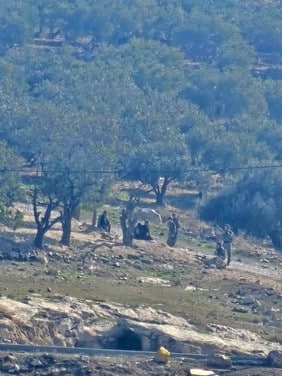
Syria and Iraq
- Iran has threatened to widen the war in Gaza to other fronts if Israel does not stop its attacks.
- Iranian-backed militias in Iraq and Syria have carried out attacks against US bases.
In the north, at this stage, Iran continues to gradually escalate tensions, however it has been avoiding opening an entirely new front against Israel. Preventing the integration of Hezbollah in an all-out campaign could exact a heavy toll on the Lebanese organizations and perhaps even on Iran itself. However, it strives to continue a gradual escalation, which will exact a price on Israel and the United States through attacks by its proxies in the region.
In Iraq and Syria, so far the pro-Iranian Shiite militias have been involved in dozens of attacks against American bases. In Yemen, the Houthis are launching missiles and drones towards Israel. At the same time, there is a continued escalation in the fighting between the IDF and Hezbollah, both quantitatively and in terms of the quality of attacks by Hezbollah along the borderline.
This week, senior Iranian officials have renewed their threats to expand the war from the Gaza Strip to additional fronts and warned that if Israel does not stop the attacks on Gaza and announce a comprehensive ceasefire immediately, Israel and the US will pay the price in different battlefields as well.
At the same time, senior Iranian officials continue to play a double game by distancing themselves from their proxies, claiming that Iran’s affiliate organizations in the region operate independently, make decisions based on their interests, and are not subject to directives from Tehran.
In the meantime, senior Iranian officials continue to present the IDF’s activity in Gaza as a strategic failure and claim that Israel is unable to realize the objectives of the war, primarily the elimination of Hamas. These messages serve Iran’s propaganda line that seeks to present Israel as defeated and weak, while also helping it justify its avoidance so far of direct involvement of Hezbollah in an all-out confrontation with Israel.
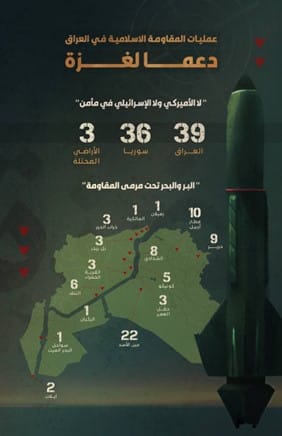
The integration of pro-Iranian Shia militias from Iraq and possibly Syria against Israel could be another step in the multi-arena campaign led by Iran. Expanding the war in Gaza to additional fronts, primarily Iraq and Syria, may allow Tehran to continue implementing the concept of “convergence of the arenas” to make it difficult for Israel to continue to focus its fighting efforts and goals against Hamas in Gaza while reducing the risk of an all-out confrontation with Israel and the United States. Iran’s avoidance of the total mobilization of all the capabilities of the “Resistance Front” may face a significant test if it assesses that the continuation of the campaign may endanger the very survival of Hamas or even threaten the ability of Hezbollah, which is considered Iran’s preferred strategic arm, to preserve its capabilities after the war, especially in southern Lebanon.
Israeli Defense Minister Yoav Galant said, “In the last few days, the security establishment has identified a growing tendency of Iran to intensify militia attacks against Israel through the couriers in Iraq, Syria, and Yemen.” He called Iran “The root of hostility and aggression against the State of Israel.” He emphasized that the war is multi-arena, even though its intensity is focusing on Gaza at the moment.
So far, the pro-Iranian militias in Iraq have been involved in more than 60 attacks against American bases in Syria and Iraq.
There have been about 20 attacks by Iranian militias on American bases in Syria and Iraq during the past week.
Yemen
- The Houthis in Yemen have fired missiles and drones at Israel.
- So far, the pro-Iranian militias in Iraq have been involved in more than 60 attacks against American bases in Syria and Iraq, of which around 20 were carried out this week.
- 5 drone and missile attacks by the Houthis were carried out against Israel this week. 3 drones were intercepted, 1 missile was intercepted by the Arrow 3 system, and 1 cruise missile was eliminated by an F-35 Israeli jet. There was 1 attack against an alleged Israeli ship, that is not related to Israel, in the Red Sea by Houthi forces.
he Iranian proxy, the Houthis in Yemen, entered the war against Israel mainly by launching cruise and ballistic missiles and drone attacks toward Israel and threatening cargo ships in the Red Sea. Even though Yemen is located 1500 km away from Israel, the Houthis represent a distant, though significant security threat to Israel.
Since October 19, they have been responsible for over 50 attacks, which were intercepted by the US naval ships and the Israel Air Force hybrid defense Air system, including the Arrow 3 (“Hetz”) and Israeli F35 fighter jets. All the attacks were intercepted over the Red Sea, and none struck their Israeli target.
Unprecedently, Saudi Arabia intercepted one Houthi attack, given that the Houthi projectiles invaded their airspace and activated their air defense system. This highlights the joint Israeli-Saudi interests in this war and could indicate the basis for cooperation against the Iranian front.
This week’s escalations:
- The Houthis in Yemen commandeered a cargo ship in the Red Sea on November 19, 2023.
- On Saturday, an IDF fighter aircraft intercepted a drone attack over the Red Sea that was on its way to attack southern Israel.
[1] For more information, see the IDSF Biweekly update on Al Shifa, https://idsf.org.il/en/papers/the-al-shifa-operation/
[2] See the full statistics at warinisrael.org